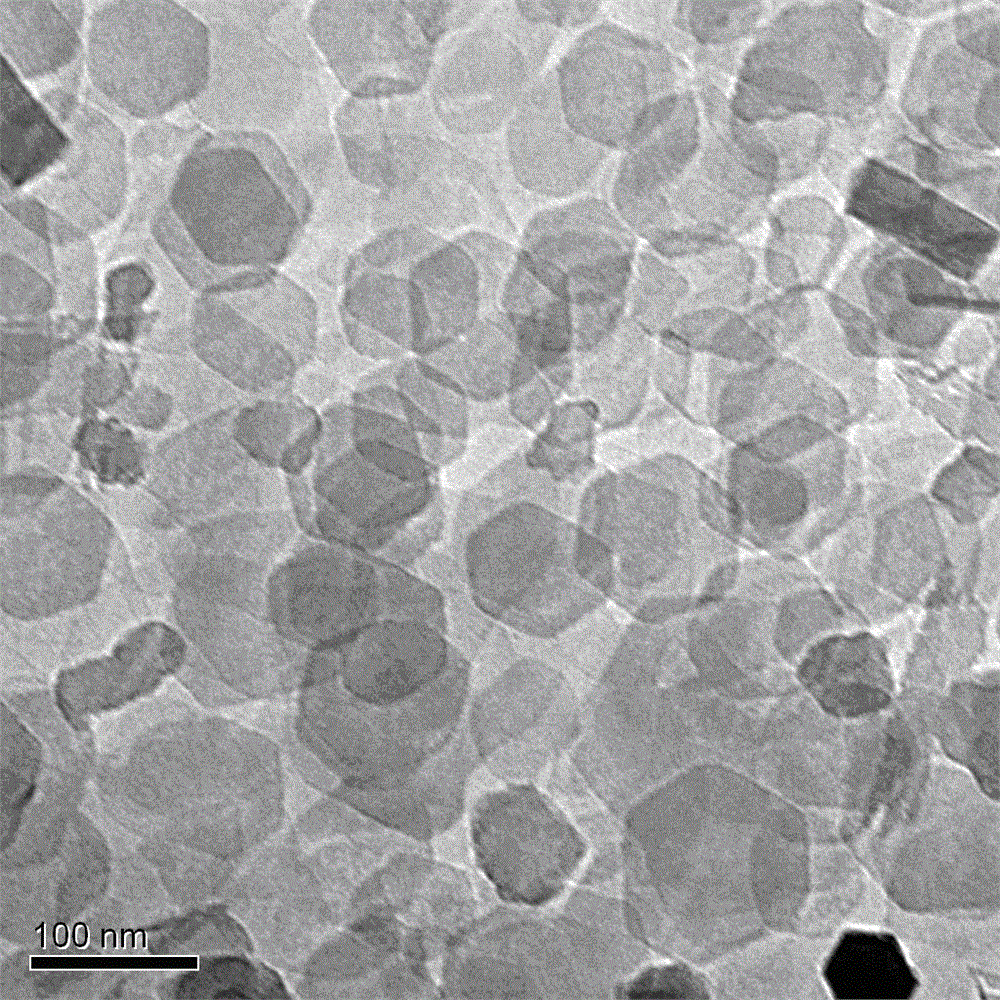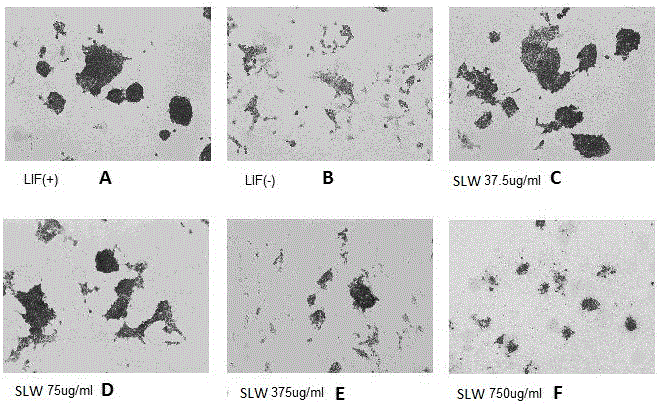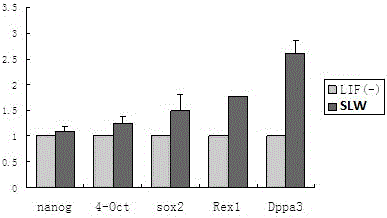Application of Inorganic Nanomaterial Layered Double Hydroxide in the Culture of Mouse Embryonic Stem Cells
A technology of inorganic nanomaterials and stem cell culture, which is applied in the direction of embryonic cells, animal cells, vertebrate cells, etc., can solve the problems of far away from clinical application, the cost of animal components, and cumbersome procedures in the culture process of embryonic stem cells, etc., to achieve easy Effect of contact with cell surface, low cytotoxicity, good biocompatibility
- Summary
- Abstract
- Description
- Claims
- Application Information
AI Technical Summary
Problems solved by technology
Method used
Image
Examples
Embodiment 1
[0018] Example 1: Preparation of nano-layered double hydroxide (SLW-1)
[0019] Prepare Mg(NO 3 ) 2 ·6H 2 O (1.536 g, 0.006mol) and Al(NO 3 ) 3 9H 2 O ( 0.75 g, 0.002mol) metal mixed salt solution 40ml in total, water as solvent, wherein the molar ratio of Mg / Al is 1:1, prepare 0.016mol NaOH solution. Under N2 atmosphere, add the metal salt mixed solution into the vigorously stirred NaOH solution, transfer the resulting suspension to a hydrothermal synthesis kettle, and take it out after 18 hours at 100°C to obtain a SLW-1 suspension with a particle size of 100-120nm, vacuum Weigh after drying in the oven. The synthesized SLW-1 was observed by transmission electron microscope (as figure 1 ), with a good crystal structure, all in hexagonal shape.
Embodiment 2
[0020] Example 2: Culture and purification of mouse embryonic stem cells mESC.
[0021] Mouse embryonic fibroblasts (MEF) were obtained from the primary generation, cultured to passage 3-5, treated with 10 μg / ml mitomycin C for 3 hours, and then used as feeder layer cells, and used within 1 week. Complete medium for mESC: high-glucose DMEM, 15% fetal bovine serum, 0.1mmol / L non-essential amino acids, 2 mmol / L glutamine, 0.1 mmol / L β-mercaptoethanol, 1000U / ml0.1 leukemia inhibitory factor, normal After culturing for 2-3 days, add trypsin (0.25%)-EDTA (0.02%) to digest the cells, neutralize the trypsin in the culture medium, place the cells on a 0.1%-coated petri dish, and culture for 30 minutes. After counting the unattached mESCs, they were inoculated at 2×104 per well on a six-well plate coated with 1% gelatin. After 24 hours of culture, they were replaced with culture medium without LIF factor, and different doses of The SLW-1 nanoparticles obtained in Example 1 were co-cul...
Embodiment 3
[0022] Example 3: Effect of SLW-1 on mESC self-renewal
[0023] (1) Alkaline phosphatase (ALP) activity detection
[0024] An important biological characteristic of undifferentiated embryonic stem cells is the ability to synthesize high concentrations of alkaline phosphatase (AP), which can reflect the differentiation state of embryonic stem cells. Alkaline phosphatase staining was performed on the fixed mESCs obtained in Example 2. Such as figure 2 As shown, morphologically, the mESCs depleted of LIF factors have been completely differentiated, while the mESCs added with SLW-1 can inhibit the differentiation; the mESCs treated with the final concentration of SLW-1 at 37.5 µg / ml and 75 µg / ml stained strongly with alkaline phosphatase Positive, while mESC depleted of LIF factor was weakly positive. It shows that SLW-1 can promote the self-renewal ability of mESC.
[0025] (2) Realtime PCR was used to detect the expression of pluripotency and self-renewal transcription fact...
PUM
| Property | Measurement | Unit |
|---|---|---|
| particle diameter | aaaaa | aaaaa |
| particle diameter | aaaaa | aaaaa |
Abstract
Description
Claims
Application Information
 Login to View More
Login to View More - R&D
- Intellectual Property
- Life Sciences
- Materials
- Tech Scout
- Unparalleled Data Quality
- Higher Quality Content
- 60% Fewer Hallucinations
Browse by: Latest US Patents, China's latest patents, Technical Efficacy Thesaurus, Application Domain, Technology Topic, Popular Technical Reports.
© 2025 PatSnap. All rights reserved.Legal|Privacy policy|Modern Slavery Act Transparency Statement|Sitemap|About US| Contact US: help@patsnap.com



